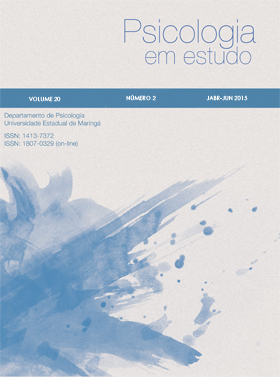DIMENSIONES DE LA MOTIVACIÓN DESDE LA PERSPECTIVA DEL ALUMNADO: 20 AÑOS INVESTIGACIÓN
Abstract
Este artículo tiene como objetivo identificar y analizar qué dimensiones se constituyen como factores de motivación o desmotivación hacia el aprendizaje, en la materia de Historia de segundo curso de Bachillerato, desde el punto de vista de los estudiantes. La información para responder a estas cuestiones surge de una línea de investigación iniciada hace más de dos décadas, desde cuyo marco se han realizado diversas recogidas de datos a través de cuestionarios a 1523 estudiantes de la Región de Murcia y entrevistas a 200 estudiantes de diferentes titulaciones universitarias, repartidos por las provincias de Alicante, Almería, Barcelona, Murcia y Sevilla. Los resultados indican una constancia a lo largo de los cursos y ponen de manifiesto una dimensión ligada a aspectos relacionales que contribuyen, en gran medida, a la motivación del alumnado hacia el aprendizaje de la Historia. Así, el clima del aula y el profesor se consideran agentes de motivación, sugiriendo que un profesor capaz de planificar, organizar y proponer tareas lejos de la metodología tradicional y más próximo a crear ambientes dinámicos, a través de actividades cooperativas en un clima de confianza, puede contribuir a fomentar el interés, enganchar y despertar el gusto por la Historia, así como aumentar la calidad académica.
Downloads
Riferimenti bibliografici
Beane, J. A. (2005). La integración del currículum. Madrid: Morata.
Biggs, J. (2001).The reflective institution: assuring and enhacing the quality of teaching and learning. Higher Education, 41, 221-238.
Bono, A. (2010). Los docentes como engranajes fundamentales en la promoción de la motivación de sus estudiantes. Revista Iberoamericana de Educación, 54, 2,1-8.
Carolina, M. (2011), Las buenas prácticas de evaluación en la Universidad a partir de las voces de los estudiantes. Revista de Educación. 2, 3,211-228.
Crooks, T.J. (1988). The impact of Classroom Evaluation Practices on Students. Review of Educational Research, 58 (4), 438-481.
Coll, C. (Coord.) (2010). Desarrollo, aprendizaje y enseñanza en la Educación Secundaria. Barcelona. Graó.
Díaz, J., Serrano, F.& Alfageme, B. (2014). Formación docente en ciencias sociales: creencias e identidad profesional de los futuros profesores de Educación Secundaria Indagatio Didactica, 6(3), 23-37.
Friesen, S. (2010). Student Engagement, Equity, and the Culture of Schooling.En Canada-United States Colloquium on Achieving Equity Through Innovation. Recuperado 5 de agosto de 2015 de http://cea-ace.s3.amazonaws.com/media/CEA-2010-Colloquium-Friesen.pdf.
Gimeno, J. (2012). Educarse en la era digital. Madrid. Morata.
Groos, D. (1993). Tools for Teaching. Jossey Bass Publishers: San Francisco.
Gutiérrez, M, & López, E. (2012). Motivación y comportamiento de los alumnos en el rendimiento académico. Infancia y aprendizaje. 35,1,.61-72.
Inglés, C. J., Martínez, A. E., Valle, A., García, J. M. & Ruiz, C. (2011). Conducta prosocial y motivación académica en estudiantes españoles de Educación Secundaria Obligatoria. Universitas Psychologica, 10 (2), 451-465.
Kember, D. (1996) The intention to both memorise and understand: Another aproach to learning? Higuer Education, 31, 341-351.
Moreno,T.(2010). Lo bueno, lo malo y lo feo: las muchas caras de la evaluación ”Revista Iberoamericana de Educación Superior. México, issue-unam/Universia, I,2, 84-97.Recuperado 3 de agosto de 2015 de, http://ries. universia.net/index.php/ries/article/view/55/evaluacion.
Murray, C. & Greenberg, M. T. (2000). Children’s relationships with teachers and bond with school. An investigation of patterns and correlates in middle childhood. Journal of School Psychology, 38 (5), 423-445.
Murillo, F. J. Torrecilla, C., Martínez, A. & Hernández, R. (2011). Decálogo para una enseñanza eficaz. Revista Iberoamericana sobre Calidad, Eficacia y Cambio en Educación, 9, 1. Recuperado 4 de agosto de 2015 de http://www.rinace.net/reice/numeros/arts/vol9num1/art1.pdf.
Núñez del Río, M. & Fontana, M. (2009). Competencia socioemocional en el aula: Características del profesor que favores en la motivación por el aprendizaje en alumnos de Enseñanza Secundaria Obligatoria. Revista Española de Orientación y Psicopedagogía. 20 (3), 257-269.
Pascual, J. (2010). El efecto de la escuela. Más allá del aula. Revista Iberoamericana sobre Calidad, Eficacia y Cambio en Educación, 9, 1. Recuperado 5 de agosto de 2015 de, http://www.rinace.net/reice/numeros/arts/vol9num1/art2.pdf.
Patrick, H.; Mantzicopoulos, P.; Samarapungavan, A. & French, B. F. (2008). Patterns of young children’s motivation of science and teacher-child relationships. Journal of Experimental Education, 76 (2), 121-144.
Salkind, N. J. (2009). Exploring research (7th ed.). Upper Saddle River, NJ: Pearson.
Schweinle, A.; Meyer, D. K. y Turner, J. C. (2006). Striking the right balance: Students motivation and affect in elementary mathematics. Journal of Educational Research, 99 (5), 271-295.
Ruiz, J. (2012). Metodología de la investigación cualitativa. Bilbao Universidad de Deusto.
Strahan, D. (2008). Successful teachers develop academic momentum with reluctant students. Middle School Journal, 39(5),pp.4-12.
Tapia, J. (2005). Motivación para el aprendizaje. La perspectiva de los alumnos. La orientación escolar en centros educativos. Ministerio de Educación y Ciencia. 209-242.
Trillo, F. (2008). El escenario didáctico. En Trillo, F. (2008) y Sanjurjo, L. Didáctica para profesores de a pie. Propuestas para comprender y mejorar la práctica. Rosario: Homo Sapiens, 15-19.
As opiniões emitidas, são de exclusiva responsabilidade do(s) autor(es). Ao submeterem o manuscrito ao Conselho Editorial de Psicologia em Estudo, o(s) autor(es) assume(m) a responsabilidade de não ter previamente publicado ou submetido o mesmo manuscrito por outro periódico. Em caso de autoria múltipla, o manuscrito deve vir acompanhado de autorização assinada por todos os autores. Artigos aceitos para publicação passam a ser propriedade da revista, podendo ser remixados e reaproveitados conforme prevê a licença Creative Commons CC-BY.
The opinions expressed are the sole responsibility of the author (s). When submitting the manuscript to the Editorial Board of Study Psychology, the author (s) assumes responsibility for not having previously published or submitted the same manuscript by another journal. In case of multiple authorship, the manuscript must be accompanied by an authorization signed by all authors. Articles accepted for publication become the property of the journal, and can be remixed and reused as provided for in theby a license Creative Commons CC-BY.
















